(i) Models of handsets
Development of wireless handsets from 1G to 2G were based on the concept of “connecting people”, delivering both voice and text point-to-point communications. Employed technology standard of GSM was incapable of catering broadband speed requirement of data transmission, Hence, phones of that time could not connect to the internet and use interactive social media services, they were not “smart”. Notable handsets were Nokia 3310 (Fig 340), Blackberry 8100 (Fig. 341) etc.
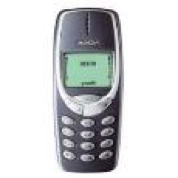
(Fig. 340) Nokia 3310

(Fig. 341) Blackberry 8100
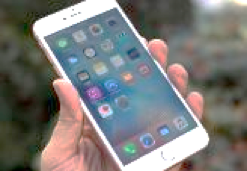
(Fig. 342) 1st generation of smartphone iPhone 4
The high-speed transmission technology of 3G opened the era of interactive video gaming, participation in social media, video viewing, website browsing etc. 3G mobile phones were first branded as “smartphones”. Outstanding models included Apple’s iphone series (Fig. 342) and Samsung’s Galaxy series.
Technology of 4G aimed at “people to information” and was regarded as a continuation of 3G technology. International Telecommunication Union (ITU) defined 4G to be wireless data transmission rate (i) up to 1 Gbps for stationary end-users and (i) up to 100 Mbps for mobile end-users. This does not mean these rates will be achieved immediately after rolling out 4G plans by ISP, but will be accessible to these limits as development of 4G technology proceeds, a kind of long-term evolution. Hence the technology standard of 4G was called LTE (Long Term Evolution). Latency, download and upload speeds of 4G smartphones are much better than that of the 3G phones.
Led by consumers’ quality demands, features of 4G smartphones focus on (i) real time fast streaming of data information, (ii) high quality photo and video taking and (ii) improved battery technology offering longer hours of consumption. Models directed at high-end consumers were represented by iphone 10, Samsung’s Galaxy S10, Huawei Mate 20 etc and those for mid-level consumers were Huawei’s Honor series and 小米etc.
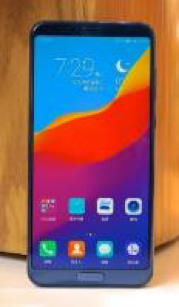
(Fig. 343) Huawei Honor V10

(Fig. 343) Huawei Honor V10
5G smartphones
Available 5G smartphones in late 2019 were not too many, primarily because supporting ISP and ground infrastructures were not fully in place. Undoubtedly these models all aimed at high-end consumers, they included Huawei’s Mate X and Samsung’s Galaxy Fold. Focus of attraction was on the feature of screen folding, one to two or two to one (Fig. 345, 346).
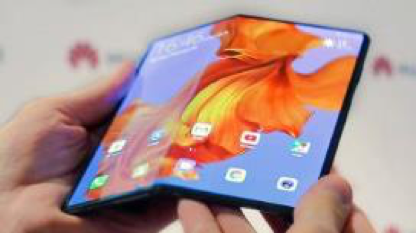
(Fig. 345) Huawei Mate X

(Fig. 346) Samsung Galaxy Fold
5G models targeted at mid-level consumers were mainly Xiaomi Series (小米, 紅米).
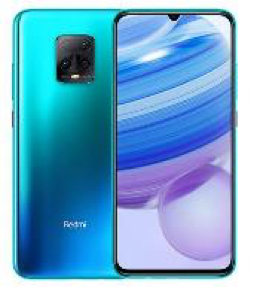
(Fig. 347) Redmi 10X Pro

(Fig. 348) Redmi 10X Pro 48 MP main camera photo
Xiaomi Redmi 10X Pro Specifications:
| NETWORK | Technology | GSM / CDMA / HSPA / LTE / 5G (dual SA and NSA) |
| PLATFORM | OS | Android 10, MIUI 11 |
| Chipset | MediaTek Dimensity 820 5G (7 nm) (聯發科技天璣 820) | |
| CPU | Octa-core (4×2.6 GHz Cortex-A76 & 4×2.0 GHz Cortex-A55) | |
| MEMORY | Card slot | microSDXC (uses shared SIM slot) |
| Internal | 128GB 8GB RAM, 256GB 8GB RAM UFS 2.1 | |
| BODY | Dimensions | 164.2 x 75.8 x 9 mm (6.46 x 2.98 x 0.35 in) |
| Weight | 208 g (7.34 oz) | |
| Build | Glass front (Gorilla Glass 5), glass back (Gorilla Glass 5), water-repellent coating | |
| SIM | Hybrid Dual SIM (Nano-SIM, dual stand-by) | |
| DISPLAY | Type | AMOLED, HDR10+, 600 nits (typ) |
| Size | 6.57 inches, 104.2 cm2 (~83.7% screen-to-body ratio) | |
| Resolution | 1080 x 2400 pixels, 20:9 ratio (~401 ppi density) | |
| Protection | Corning Gorilla Glass 5 | |
| MAIN CAMERA | Quad | 48 MP, f/1.8, 26mm (wide), 1/2.0″, 0.8µm, PDAF 8 MP, (telephoto), PDAF, OIS, 3x optical zoom 8MP, f/2.2, 119˚ (ultrawide), 1/4.0″, 1.12µm 5 MP, (macro) |
| Features | LED flash, HDR, panorama | |
| Video | 4K@30fps, 1080p@30/60fps, 720p@960fps | |
| SELFIE CAMERA | Single | 20 MP, 26mm (wide) |
| Features | HDR, panorama | |
| Video | 1080p@30fps | |
| SOUND | Loudspeaker | Yes |
| 3.5mm jack | Yes, 24-bit/192kHz audio | |
| COMMS | WLAN | Wi-Fi 802.11 a/b/g/n/ac, dual-band, Wi-Fi Direct, hotspot |
| Bluetooth | 5.1, A2DP, LE | |
| GPS | Yes, with A-GPS, GLONASS, GALILEO, BDS | |
| NFC | Yes | |
| Infrared port | Yes | |
| Radio | FM radio; built-in antenna | |
| USB | USB Type-C 2.0 | |
| FEATURES | Sensors | Fingerprint (under display, optical), accelerometer, gyro, proximity, compass |
| BATTERY | Type | Li-Po 4520 mAh, non-removable |
| Charging | Fast charging 33W, 58% in 30 min |
Era of 5G generation of handsets has just been started since 2019, associated infrastructures such as quantity and quality of base stations and terminal facilities are still ongoing. It takes perhaps another 2 to 3 years for regional completion, taking into account of the present still upgrading world-wide scale coverage of 4G LTE network. It seems until after 5 years will see the peak of commercial purchase of 5G handsets. 5G handsets offer superior data processing compared with 4G phones in terms of speed and quality, no matter in downloading video media or internet interactive game playing. However, these advantages have prices to pay too. That is, speedy consumption of storage capacity. Downloading a 10G video media in just a minute is expected.
5G technology aimed not at ultra-high speed data transfer between people and information, but rather between people and objects, objects and objects, or Internet of Things (IoT). 5G base stations adopted Multi-input Multi-output (MIMO)phase-array antenna technology. A group of base stations transfer data with carrier micro e.m. wave at a speed of 26G Hz, resulting in data packets of latency less than 1 ms.
In the 6G era, foreseeable facilities put transmitters and terminals, irrespective of distance apart, real time together. Not just base-station interactive people to information communications (smartphones), more importantly, emphases are placed on highspeed connecting everything (of course including people) or called as Internet of Everything (IoE). Applications such as remote medical operation (internet of contact), drones, driverless navigation (internet of vehicles), AI logistics, metro big-data handling (internet of things), block-chain facilities etc can be practically implemented with almost zero latency transmission.
(ii) Smartphone CPU and OS
Smartphones can be said currently affecting all of us in every aspect of dailylife. They have to be (i) decently small and light, (ii) of high viewing resolution, (iii) contact-sensitive for easy operation and (iv) suitable for prolong period of operation, meaning less consumption of power or advanced technology in battery fabrication. Hence smartphones do not use desktop-based CPUs like Intel or AMD and Windows as OS. The central hardware infrastructure of smartphones is 64-bit ARM IDE. ARM stands for Advanced RISC Machine, where R is the abbreviation for RISC (reduced instruction set computing). The technique was developed especially for mobile communications. Models include Apple Bionic, Huawei Kirin, Samsung Exynos and Qualcomm Snapdragon. Currently, OS for mobile phones is either Google’s Android (open-source code) or Apple’s iOS (closed source code). The two dominated the market with different weighting.
OS of 5G
As of 2019, Google’s Android 9 (Pie) was used primarily for 5G communications. While for the industrial sector, Huawei introduced the Harmony OS which was targeted mainly for the IoT, as the company is well equipped with the necessary support for terrestrial base stations. In late 2020, Huawei officially announced the inception of the Harmony OS 2.0 which aimed not only at the 5G smartphone market (by its compatibility with the Android OS), but also expanded connectivites with the industrial sector. This meant smartphones, desktops, TV sets, vehicles, logistics, domestic appliances etc can be linked together with or without Apps for fluent and blanket control.
(iii) Search Engine
Another major tool in internet information reception is the Search Engine. By using suitable search engine, relevant information from the internet can be obtained by using the search engine and browser. Alta Vista pioneered this web function. Unfortunately, the search engine was incapable of matching the pace of rapid development of electronic communication technique, like the requirement of ease of input in the searching operation, hence it was acquired by Yahoo. However, Yahoo was again replaced by Google which dominated the market. Google used AI, big data and a powerful Android Chrome OS to master the world’s internet search. One only needs to key in the relevant keyword using any language and will immediately obtain hundreds of concerned information channels and diagrams.
